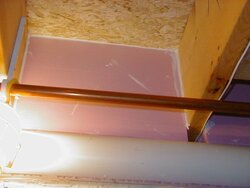mainstation
Feeling the Heat
We had our rim board and cellar walls professionally foamed , and man what a difference. It has already paid for itself with this extra cold winter.
My question is,
Is it ok to put fibreglass insulation in your floor joists, my kitchen floor is always cold--it is farthest from the corn stove. If yes can I put up vapour barrier also.?
My question is,
Is it ok to put fibreglass insulation in your floor joists, my kitchen floor is always cold--it is farthest from the corn stove. If yes can I put up vapour barrier also.?


